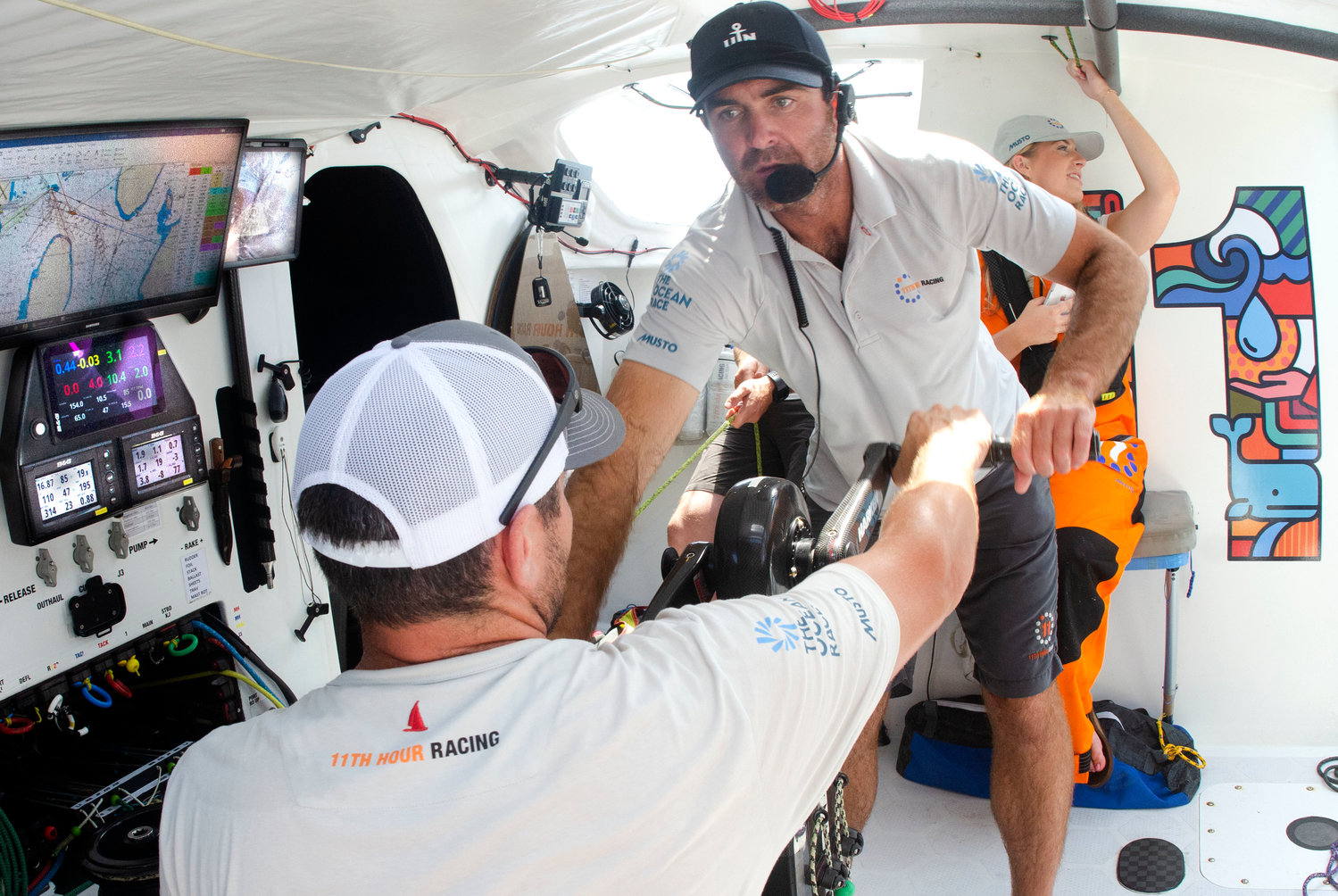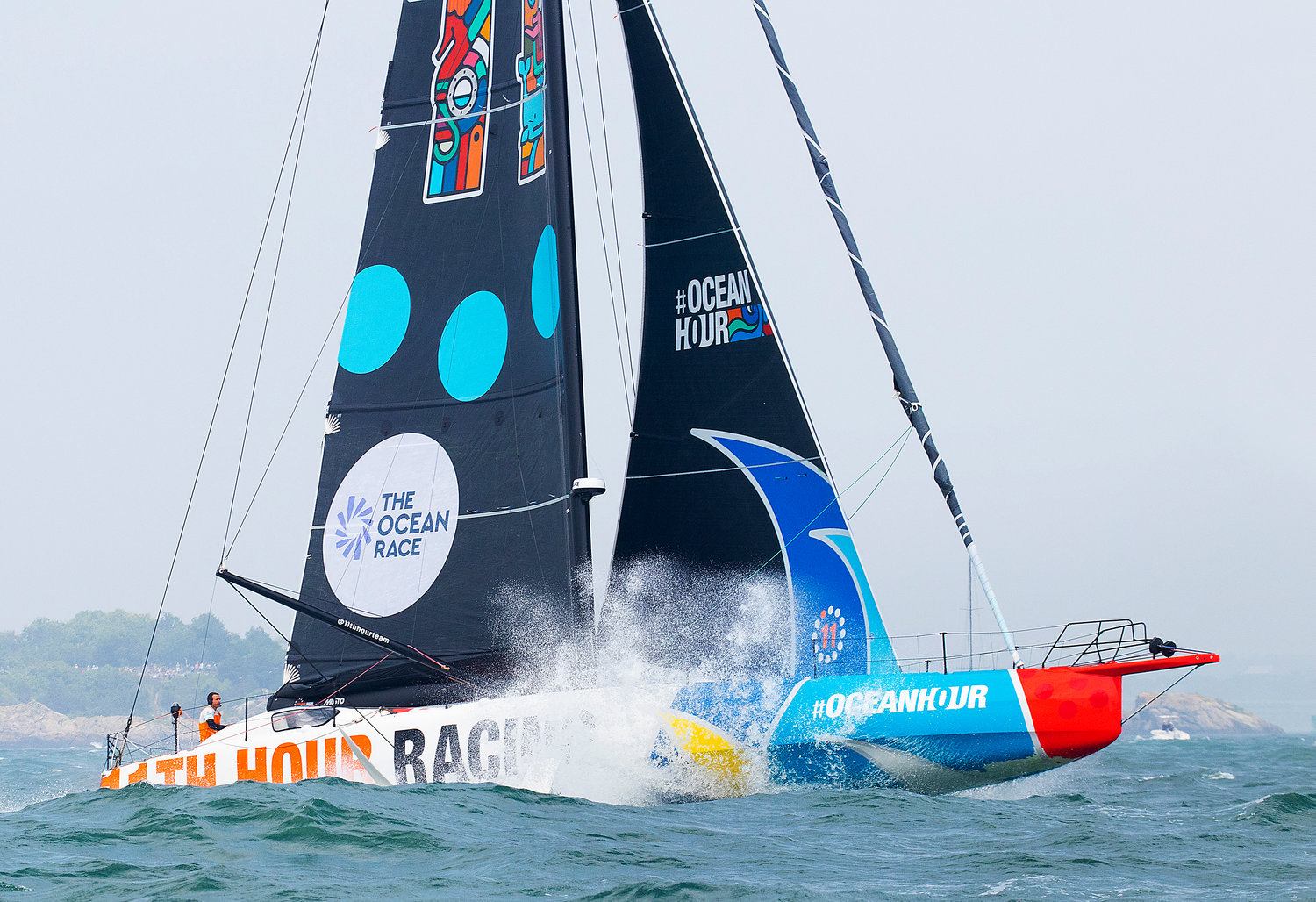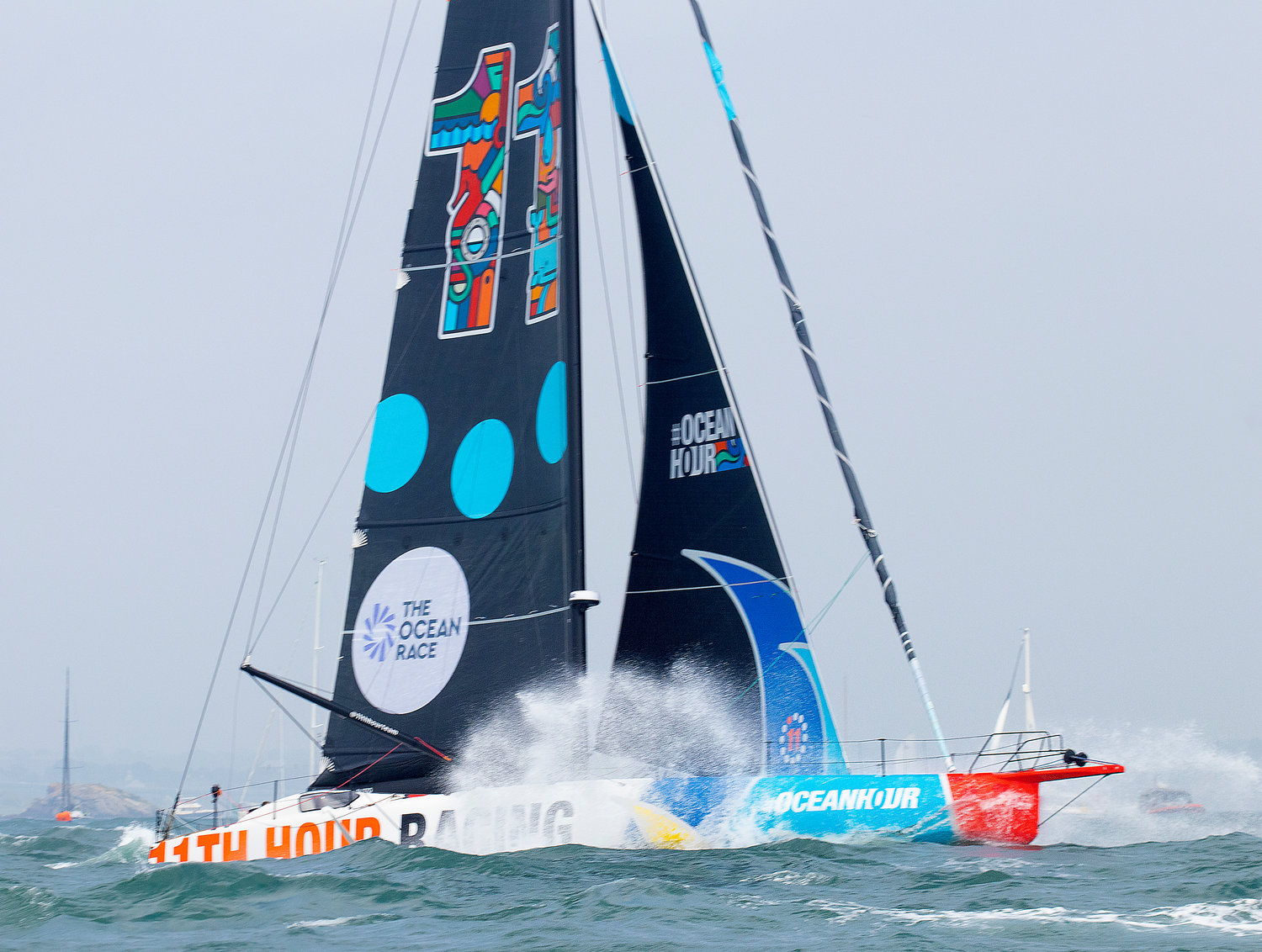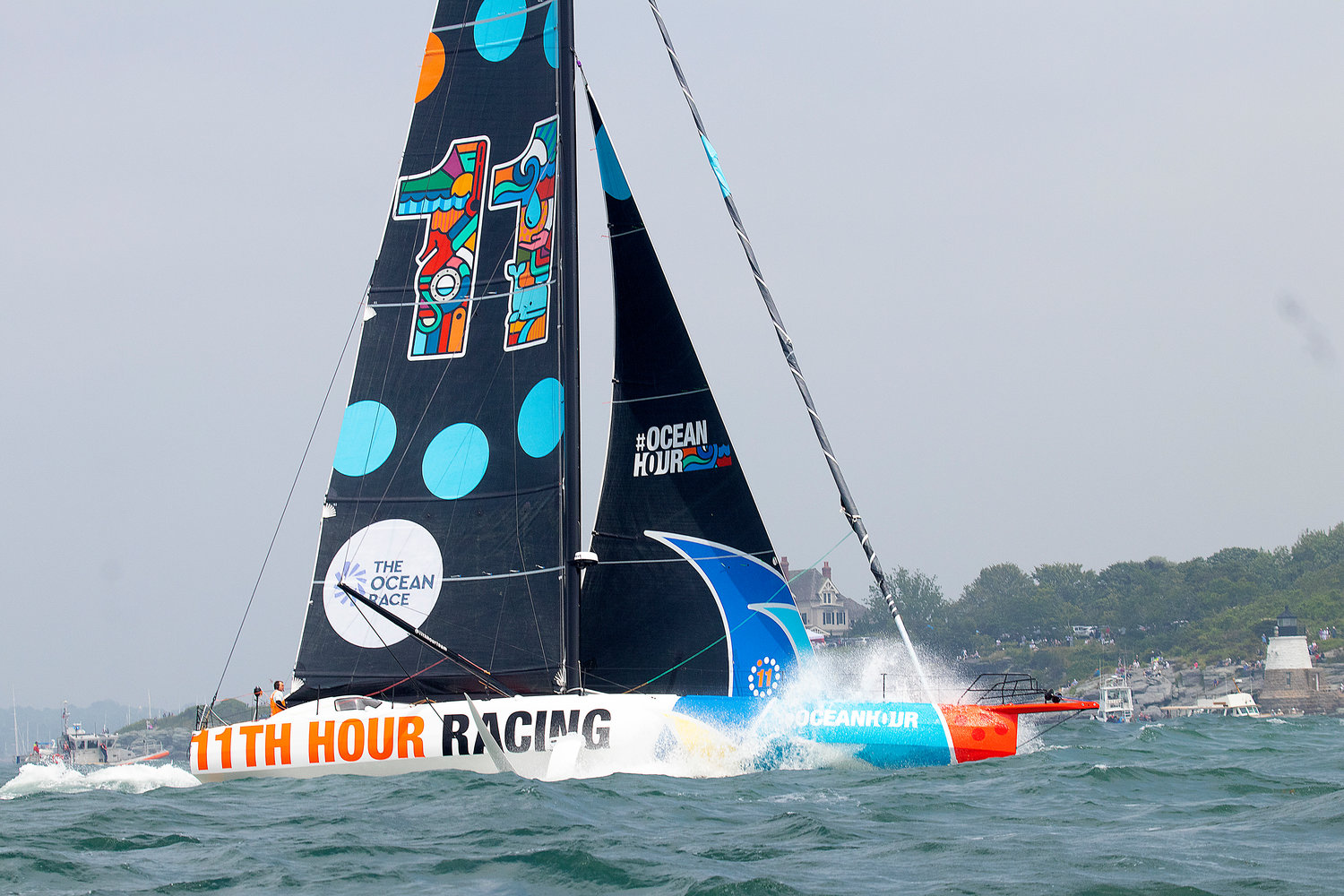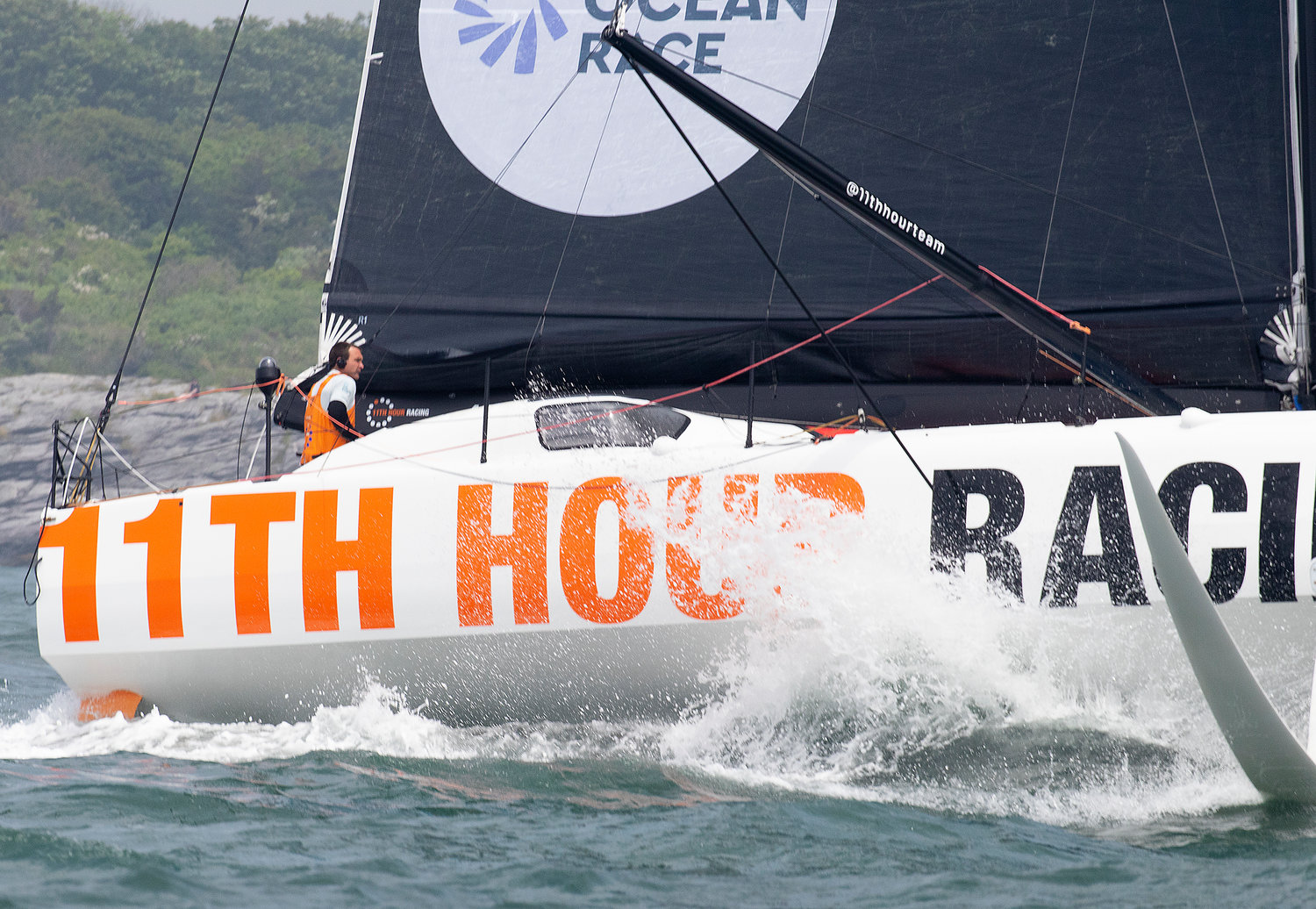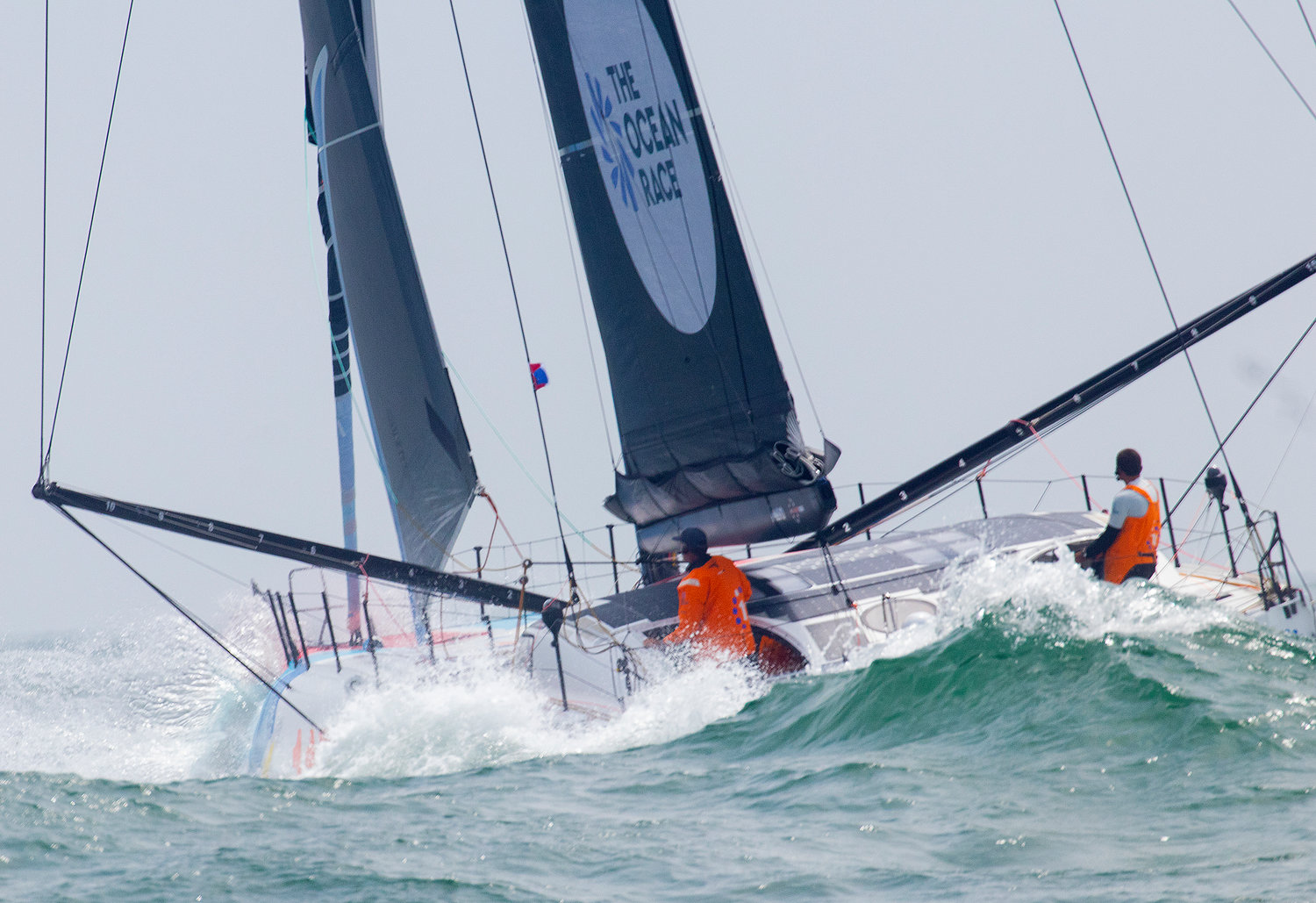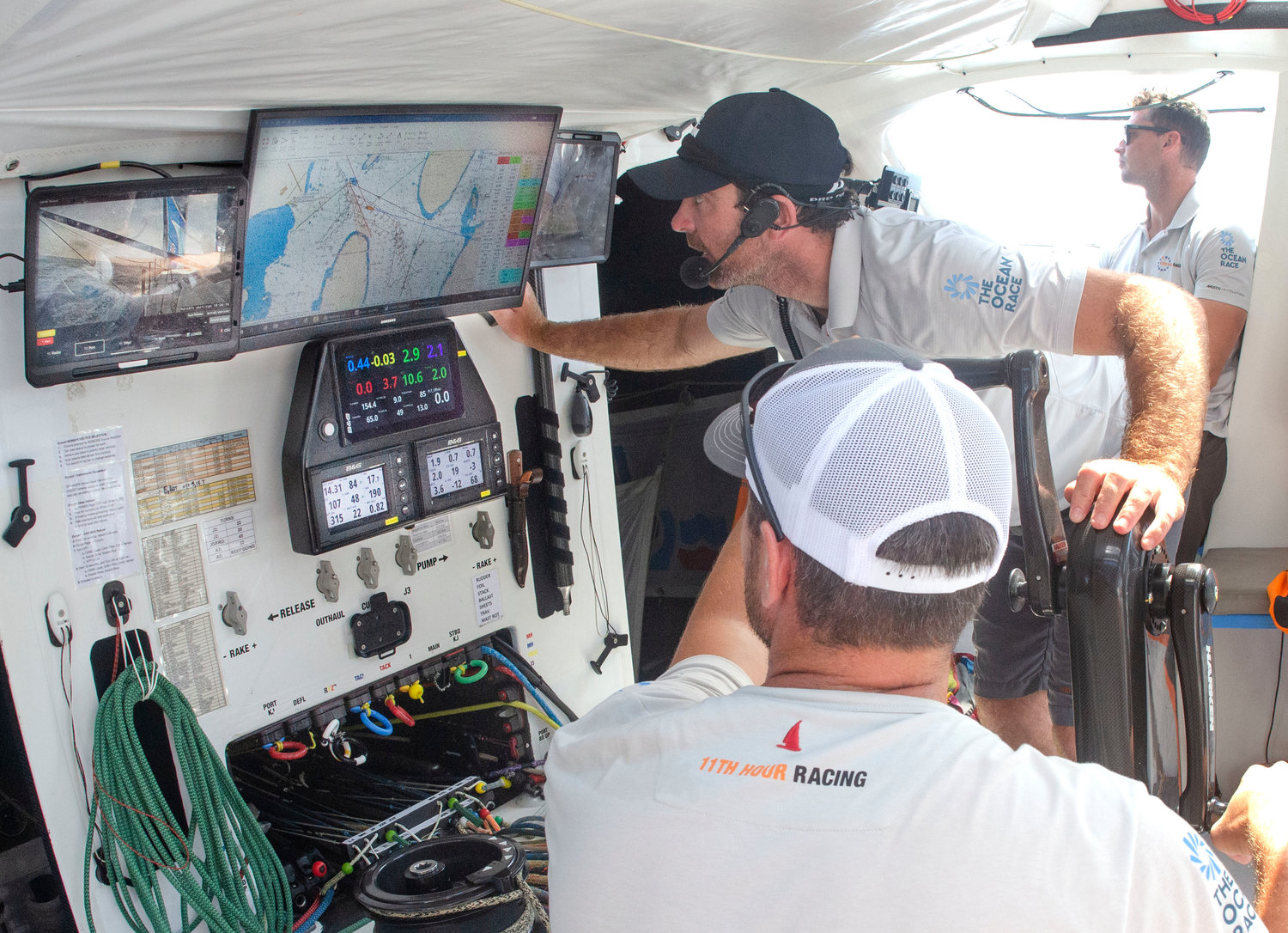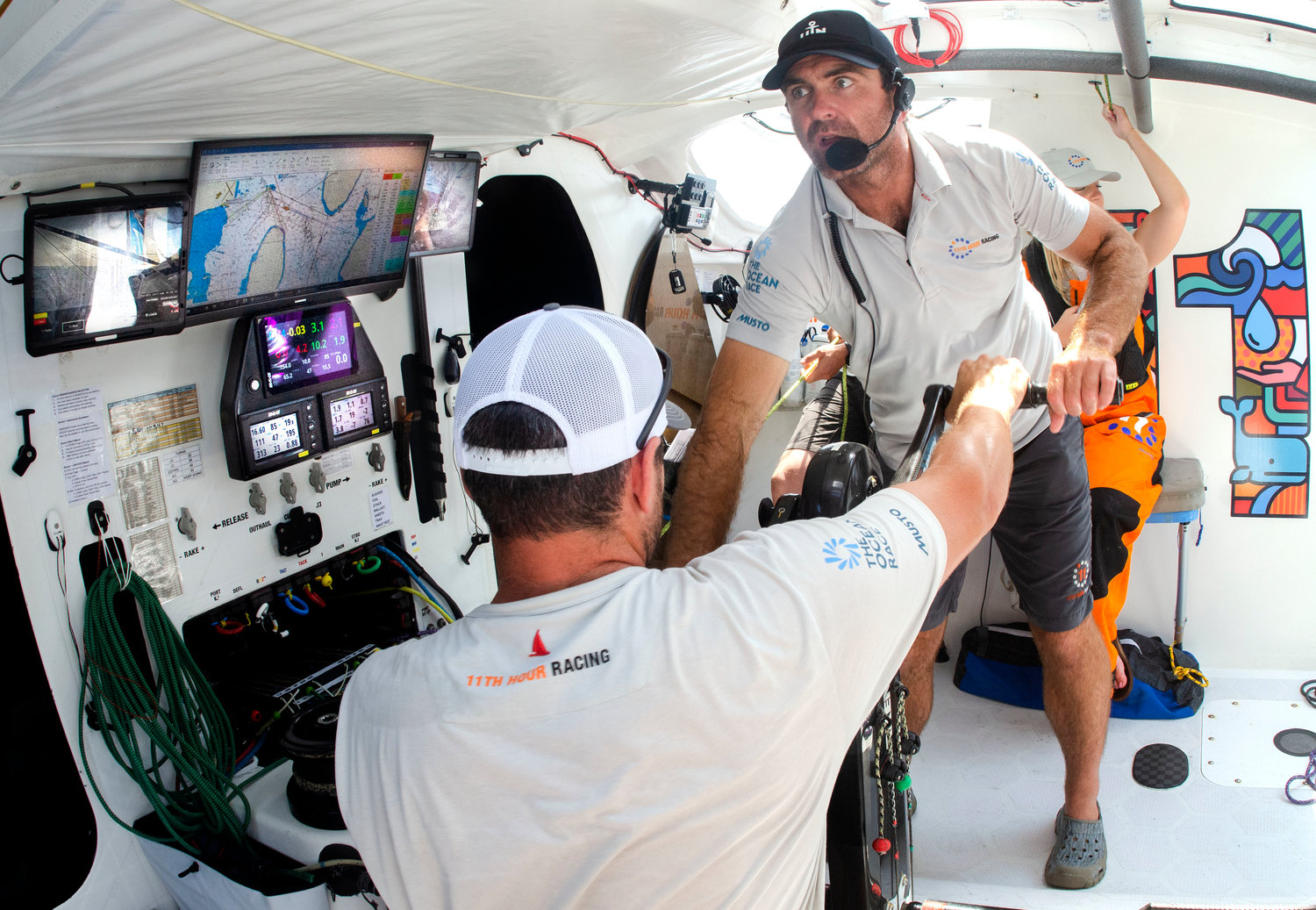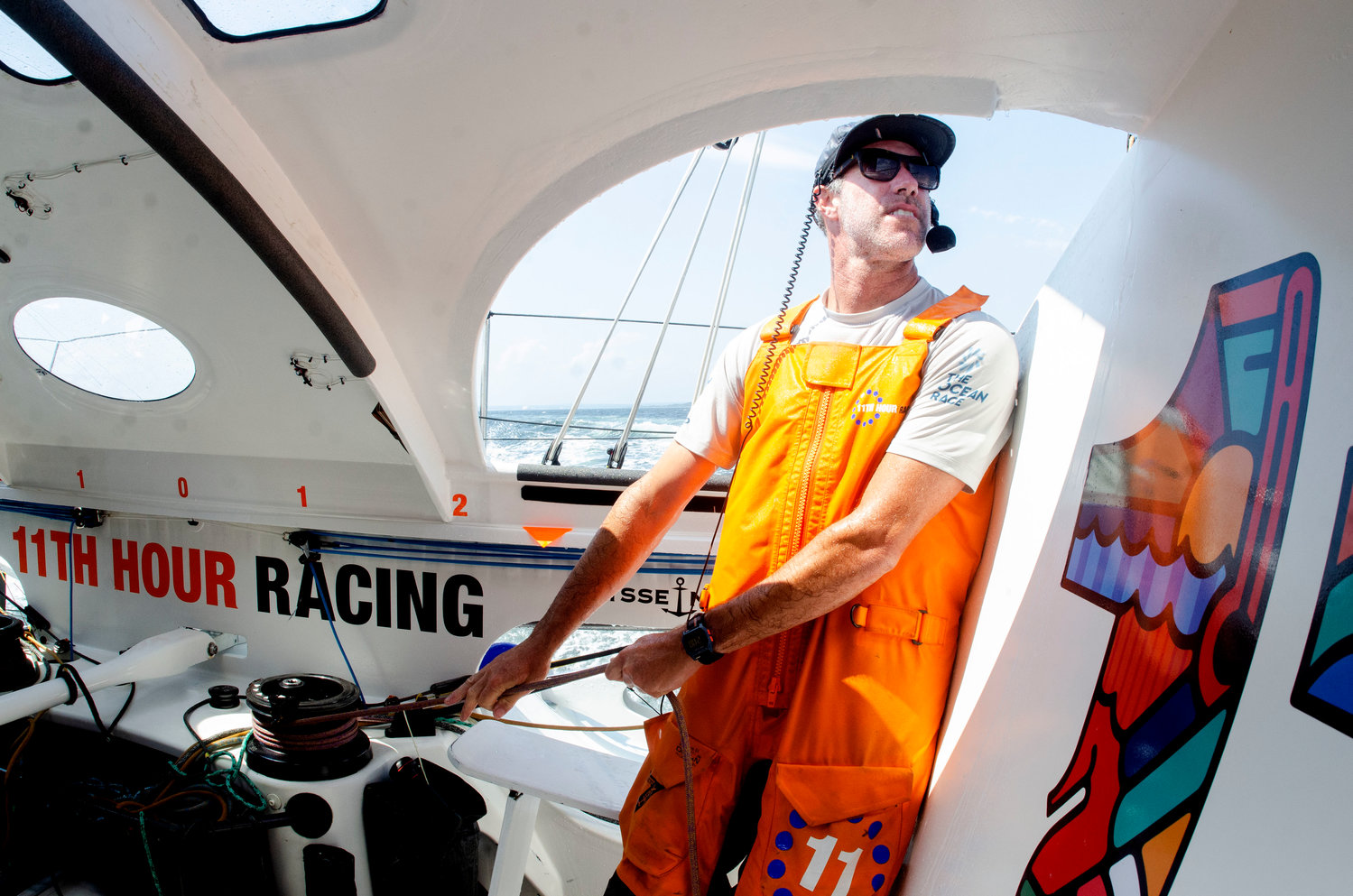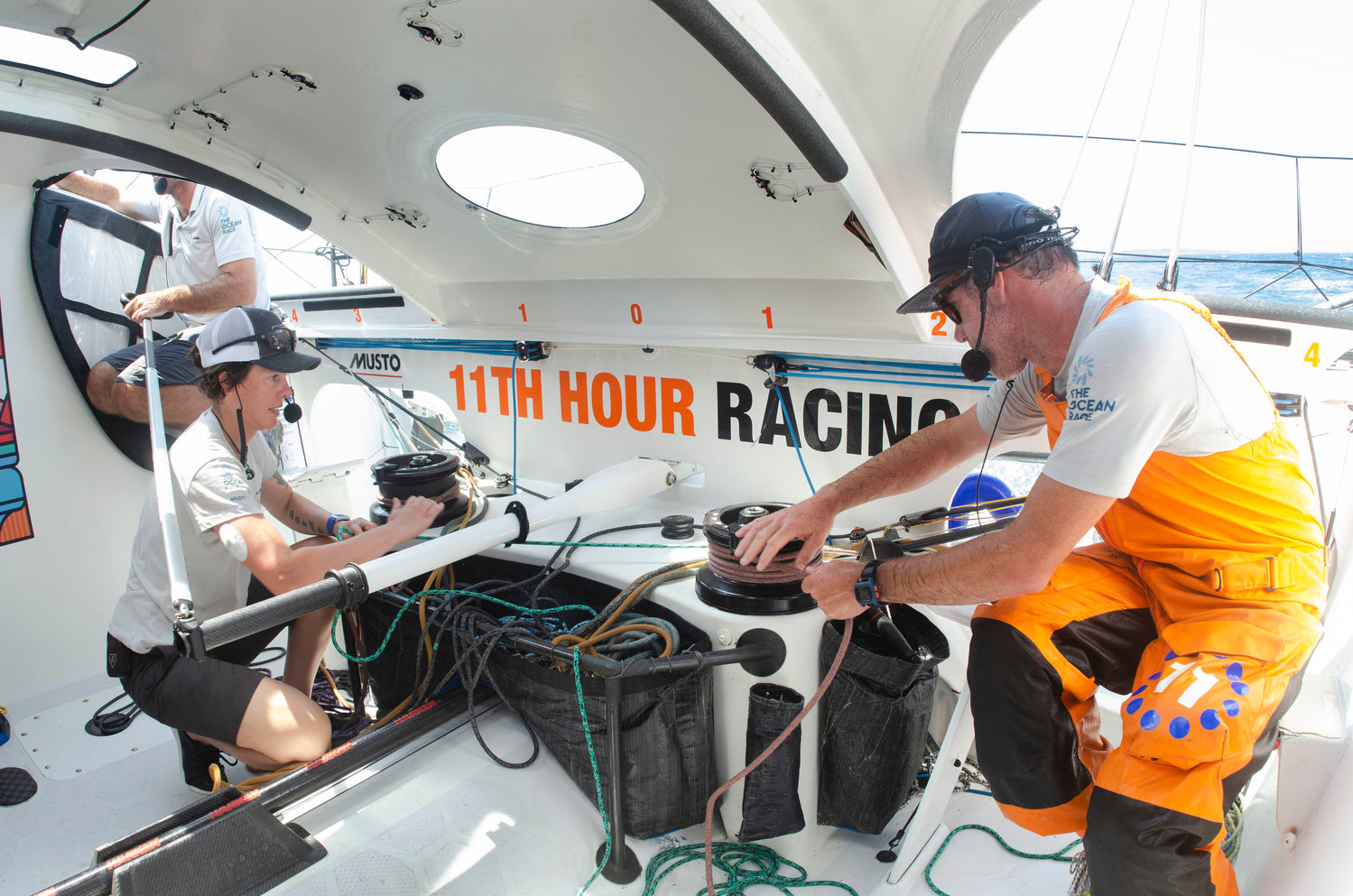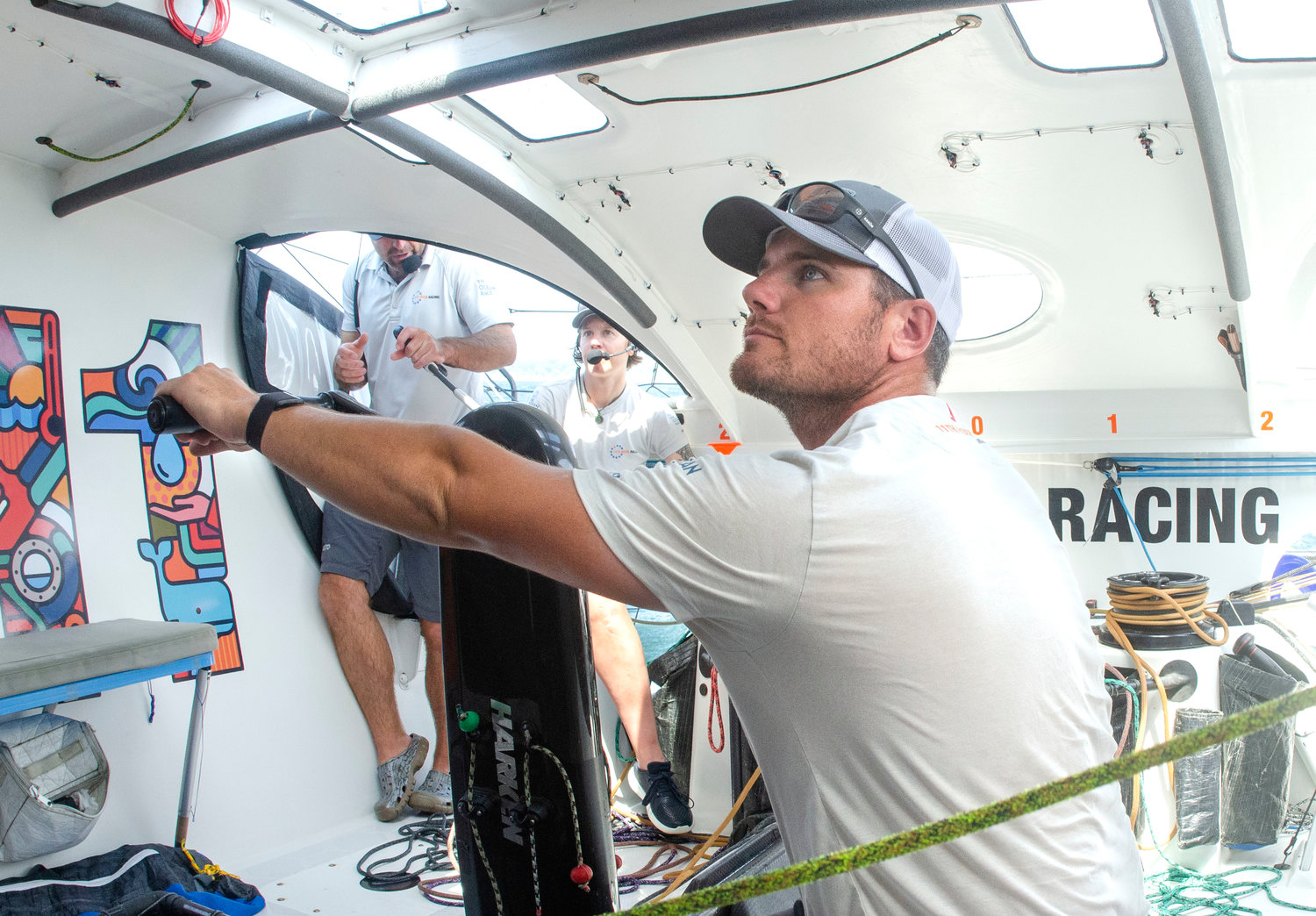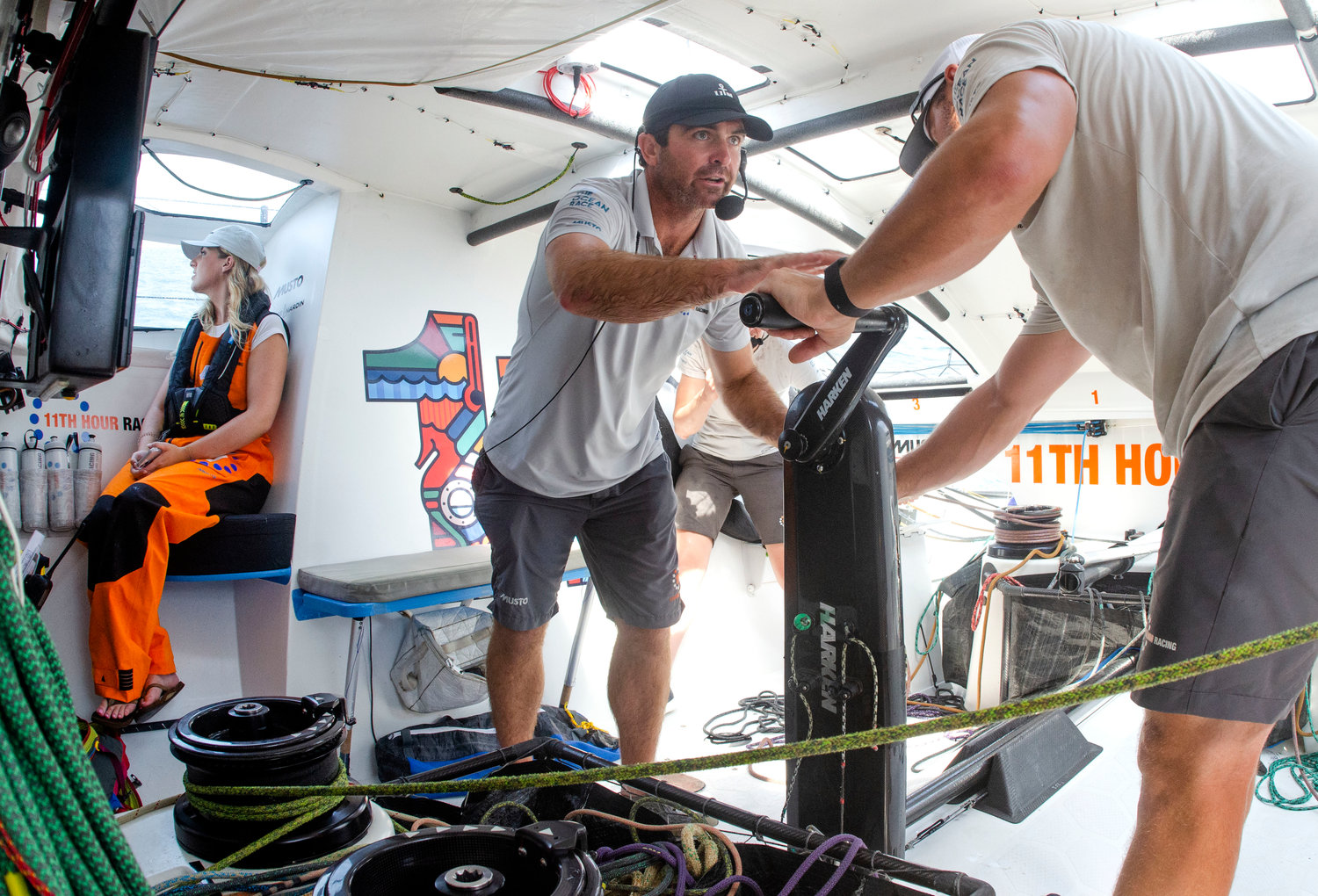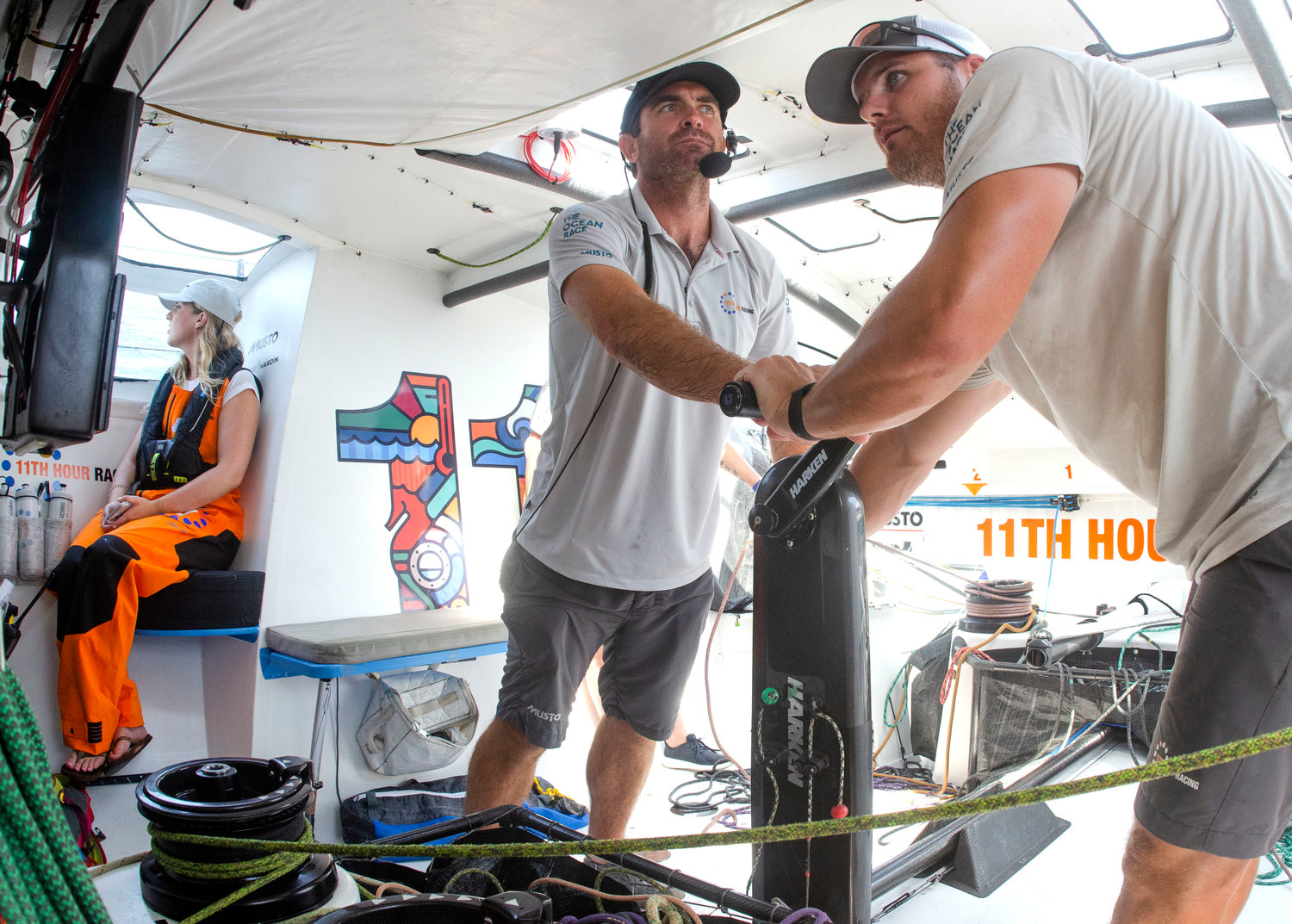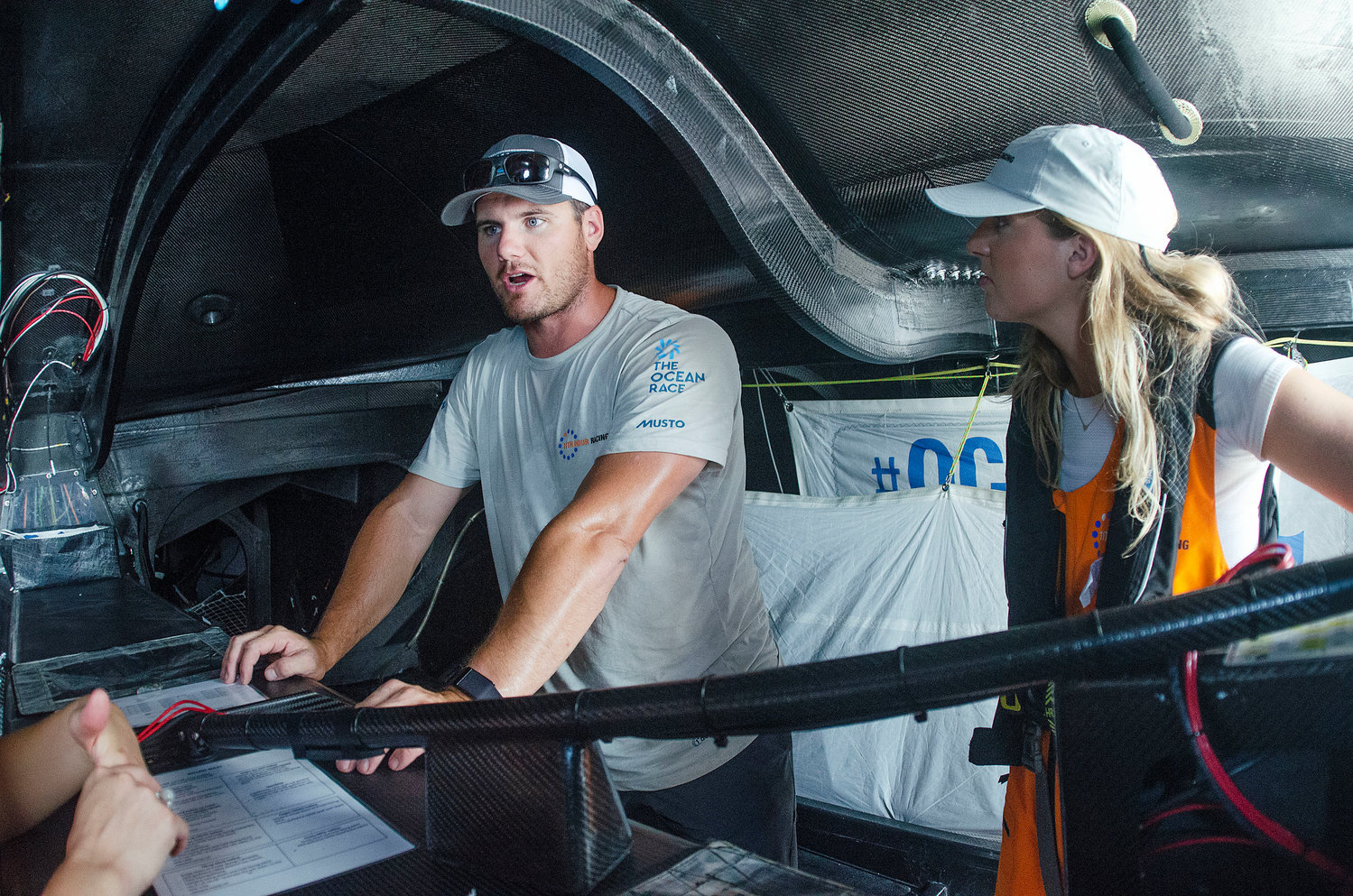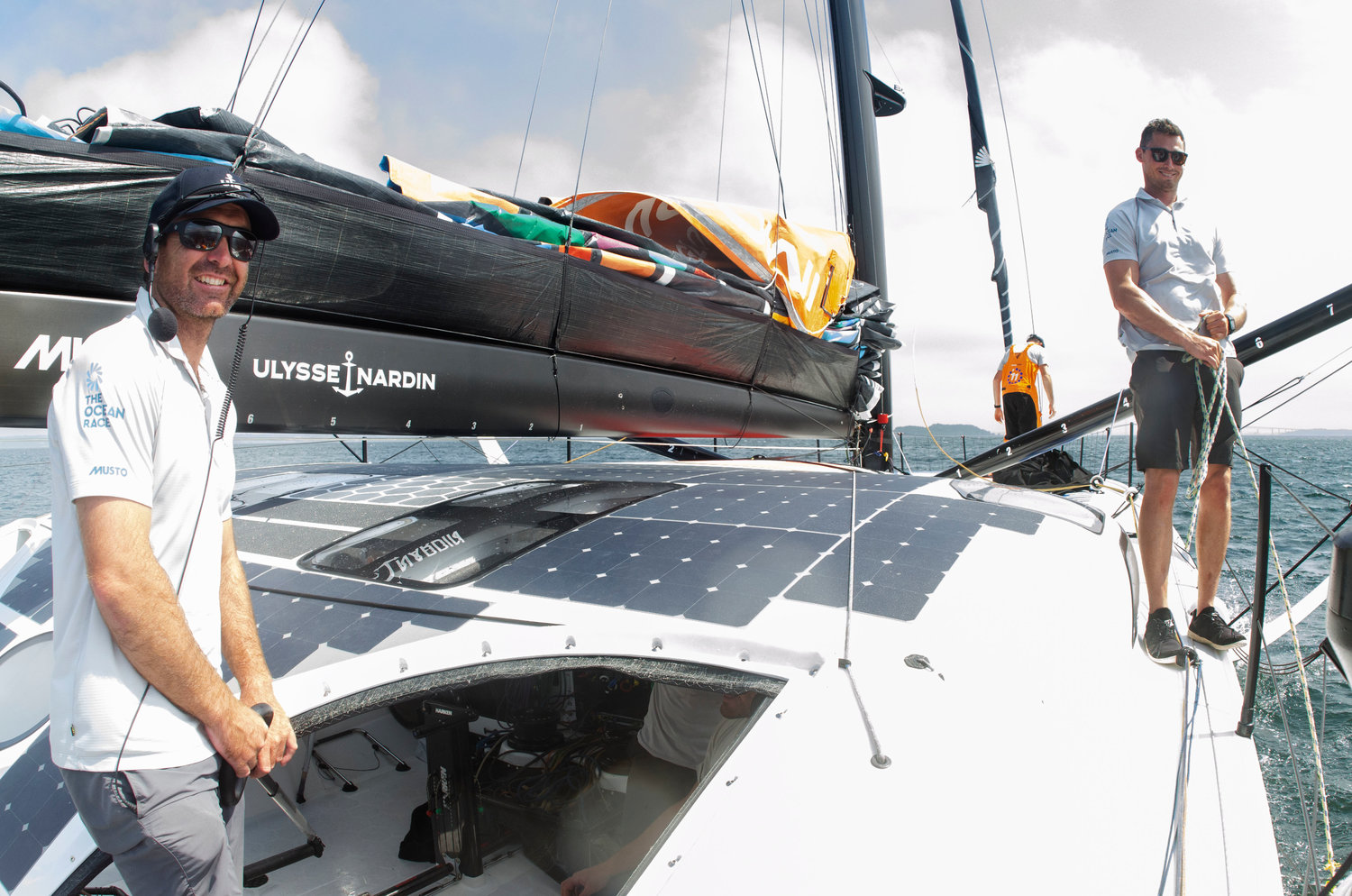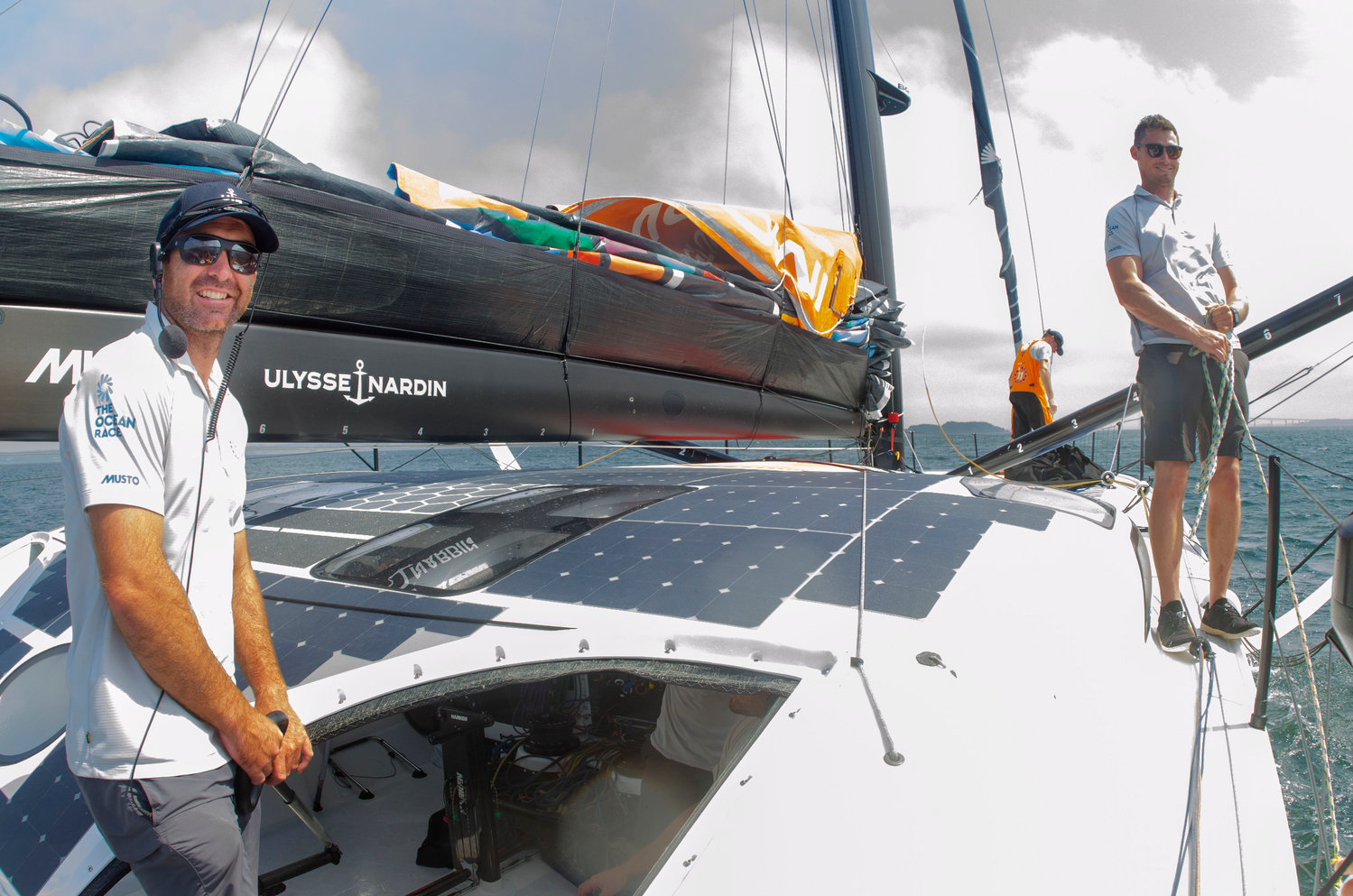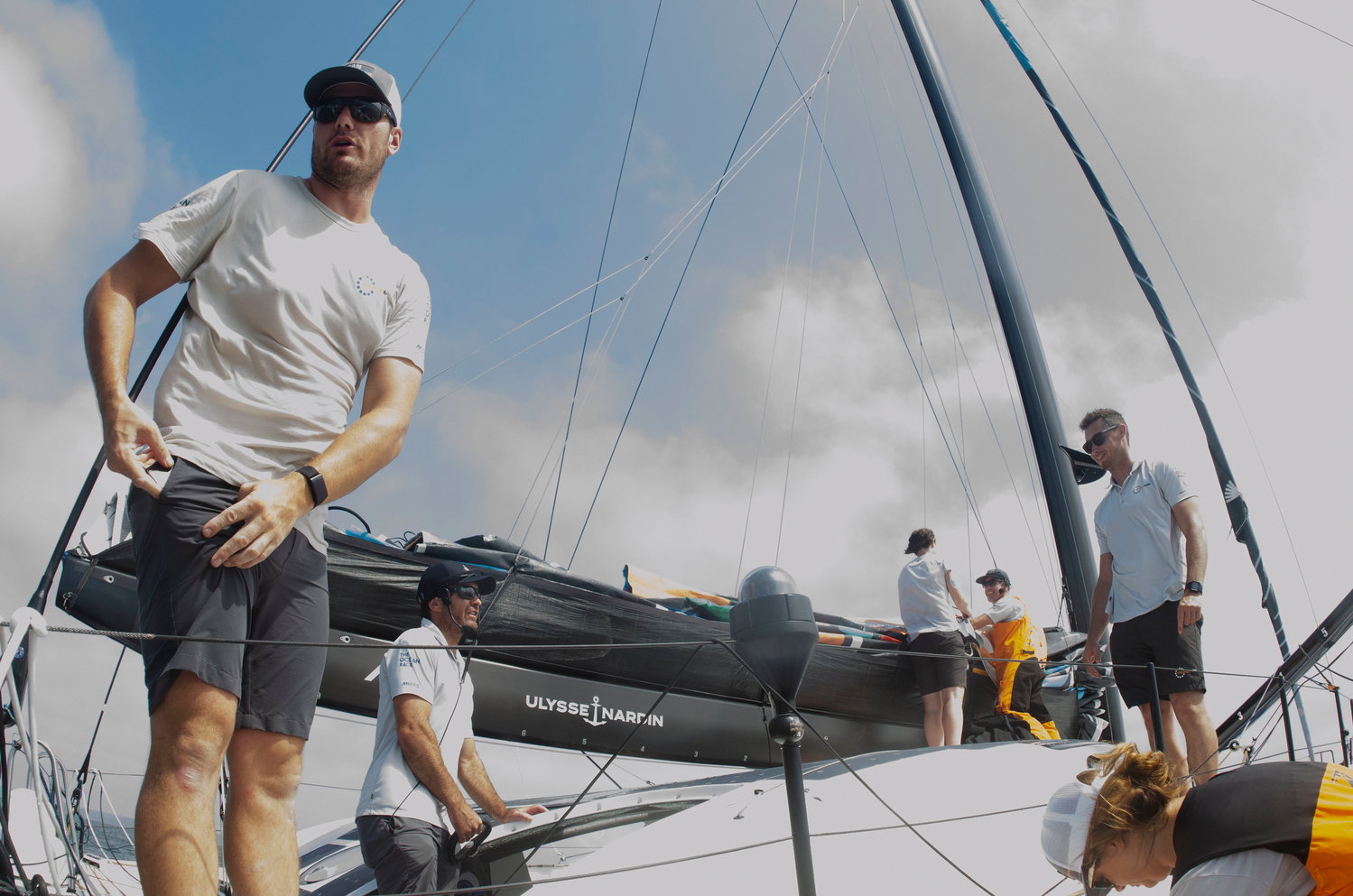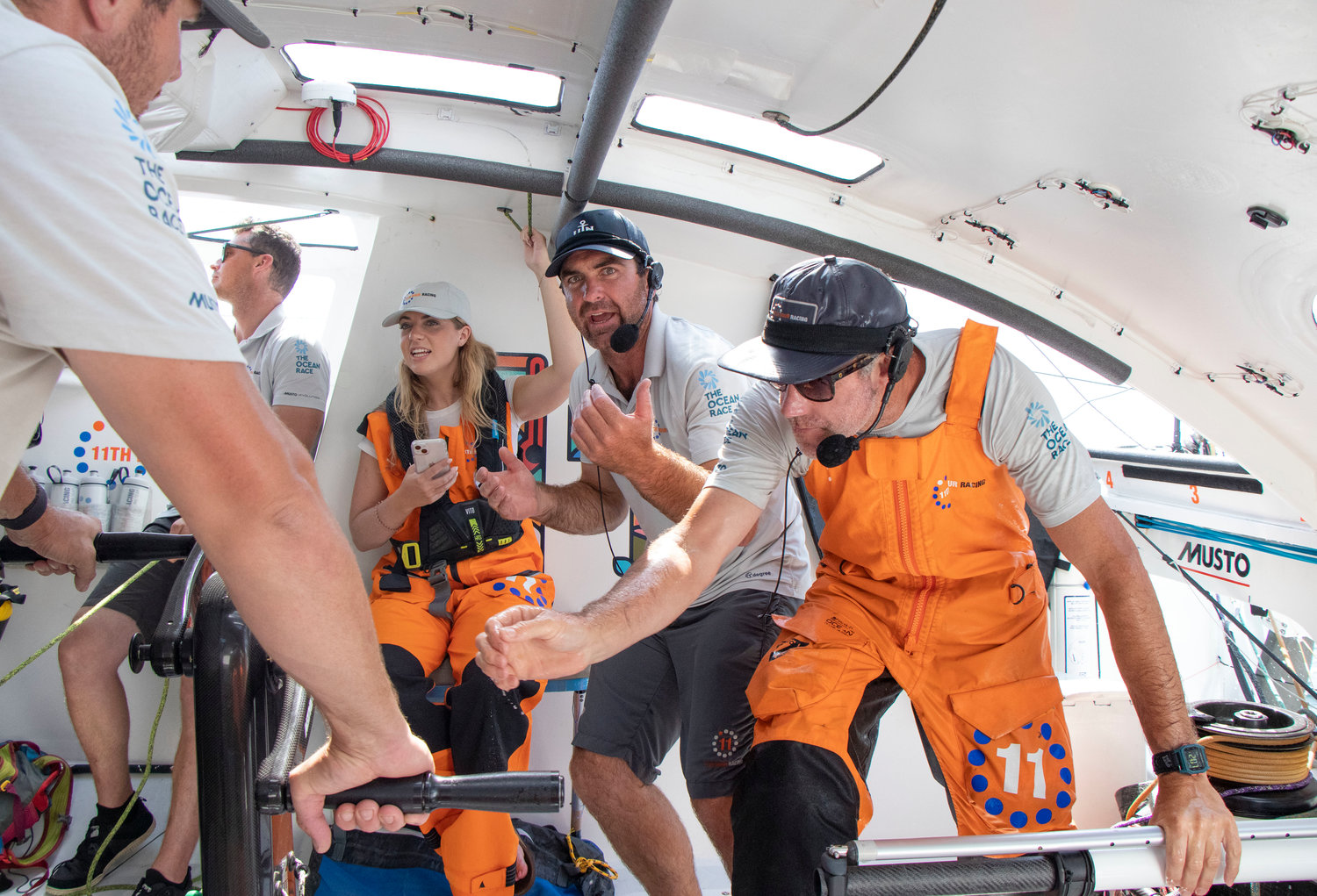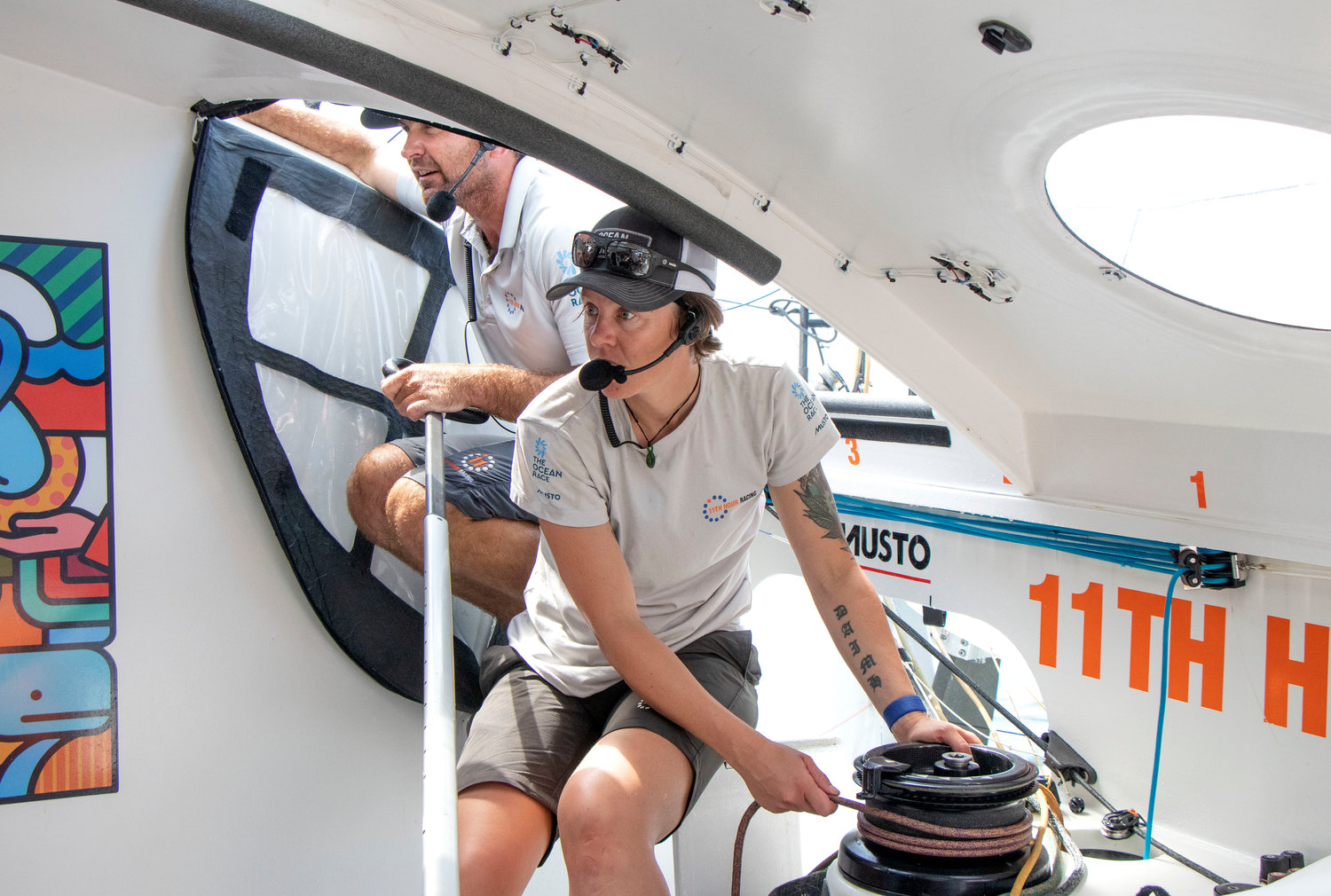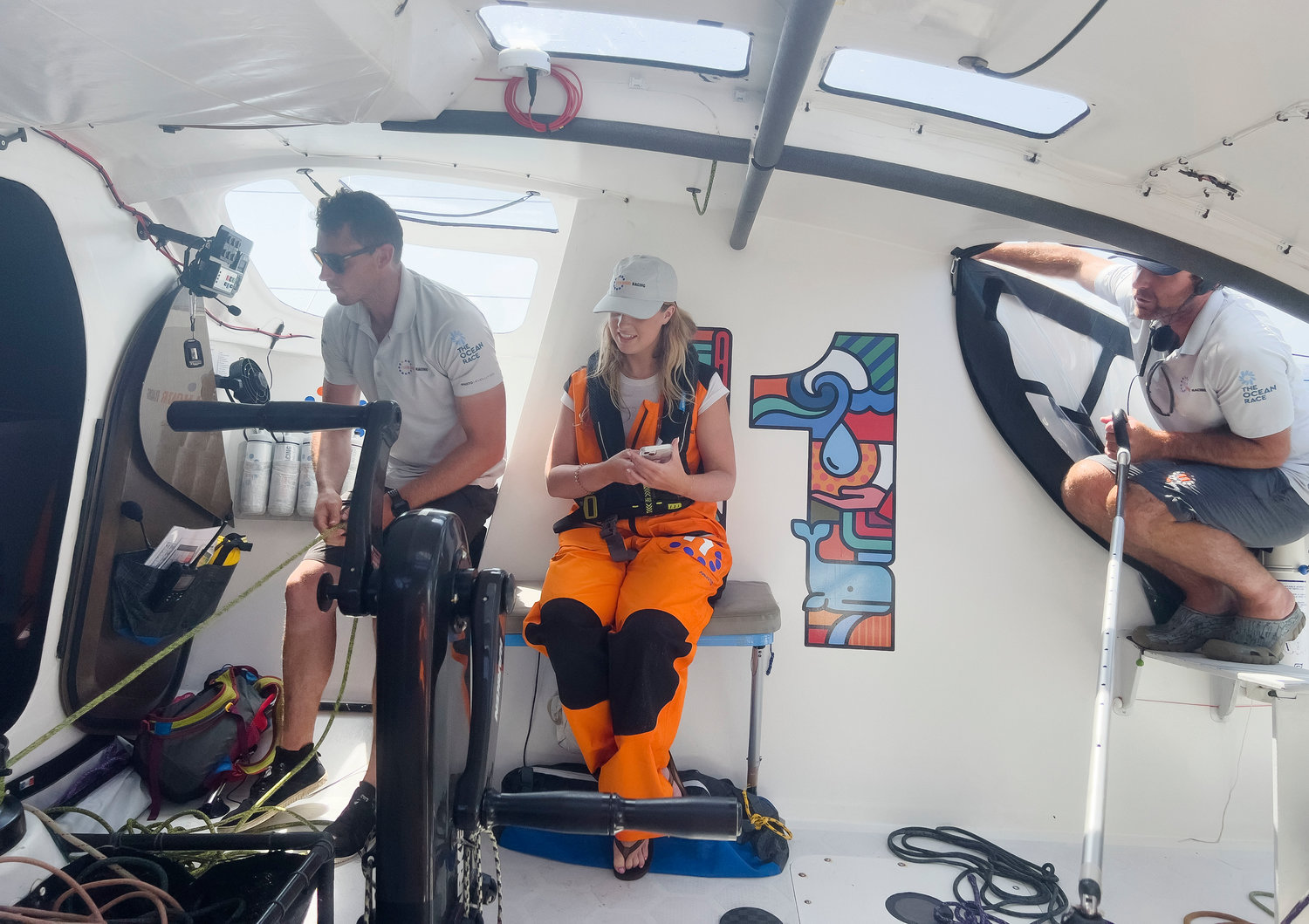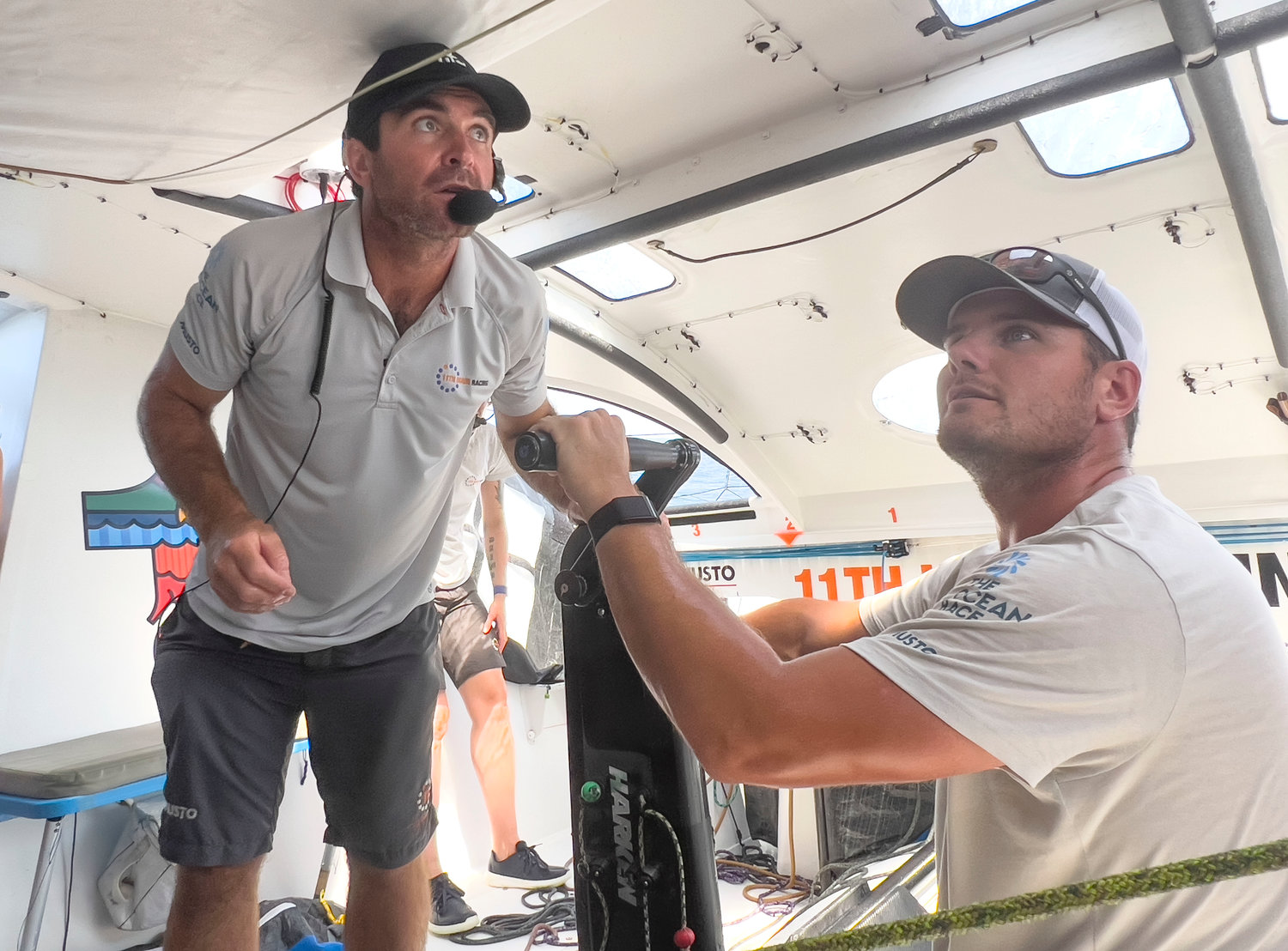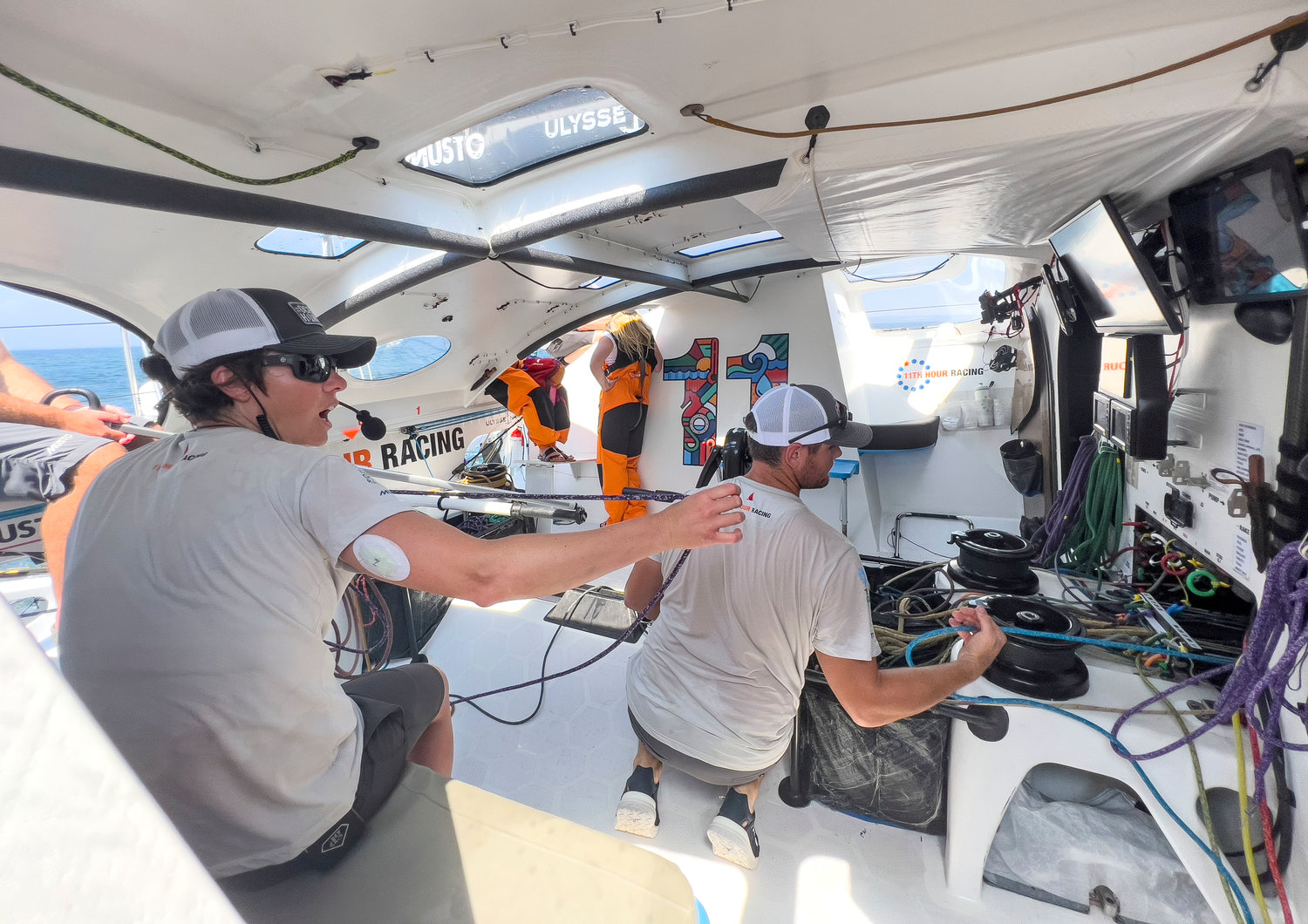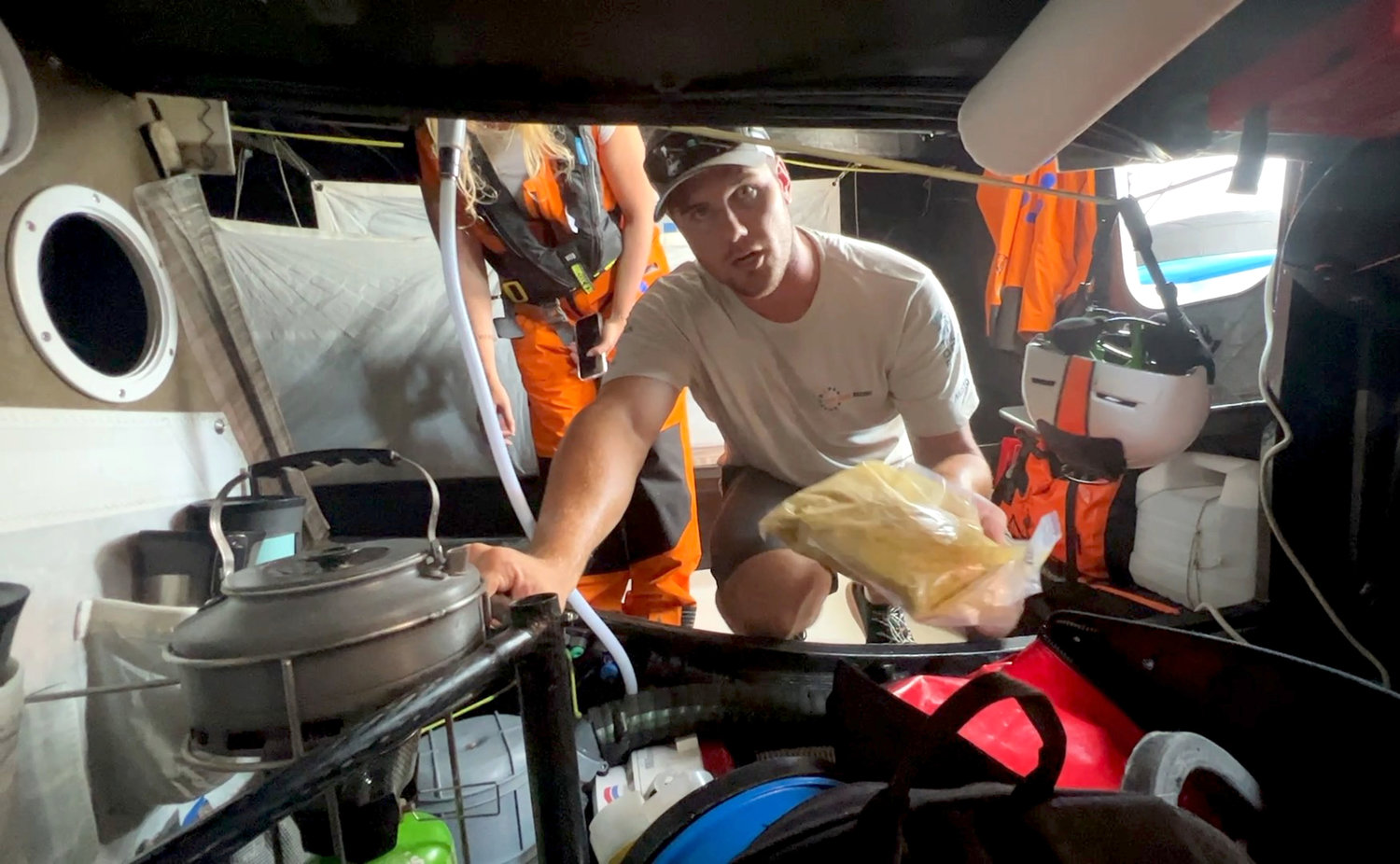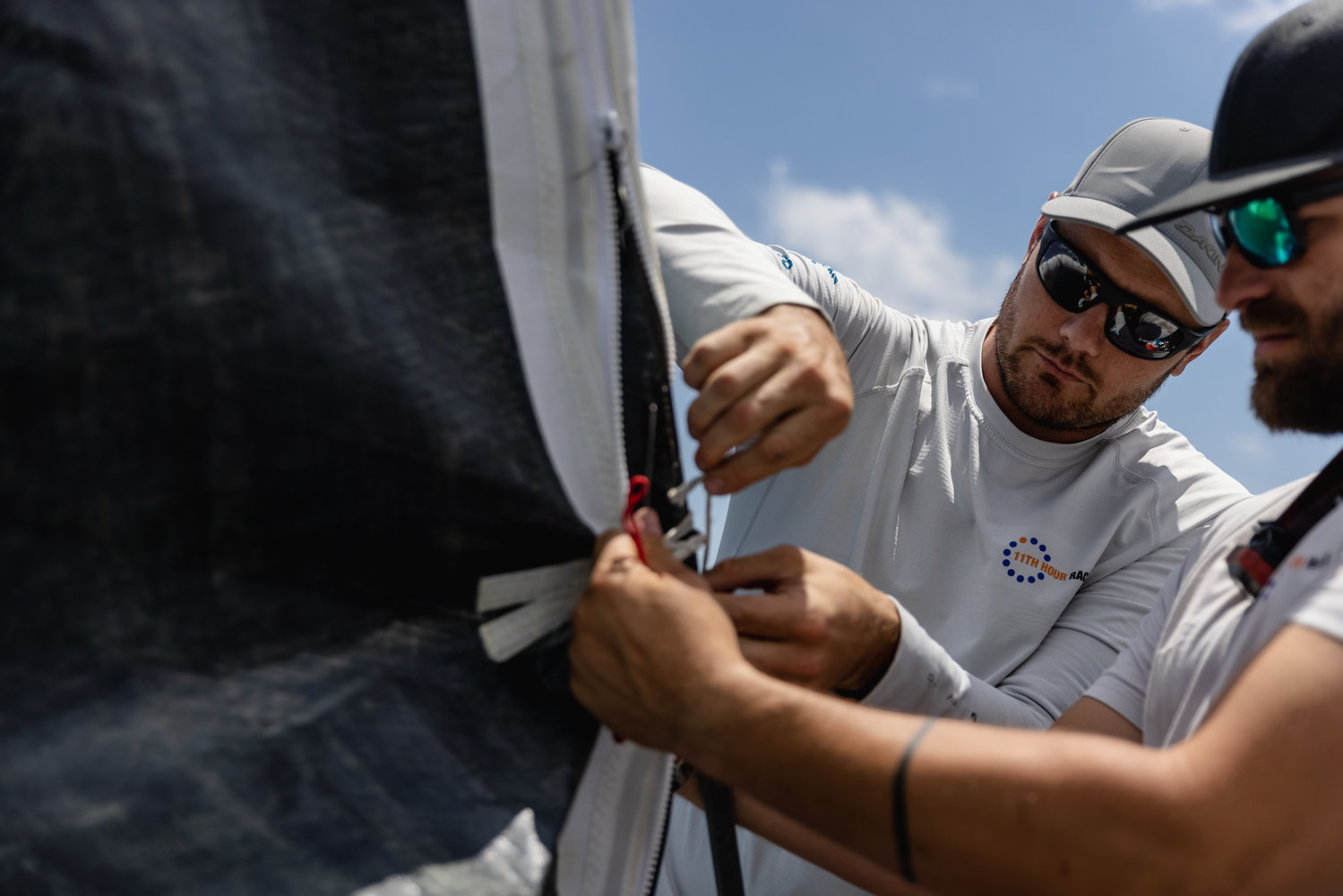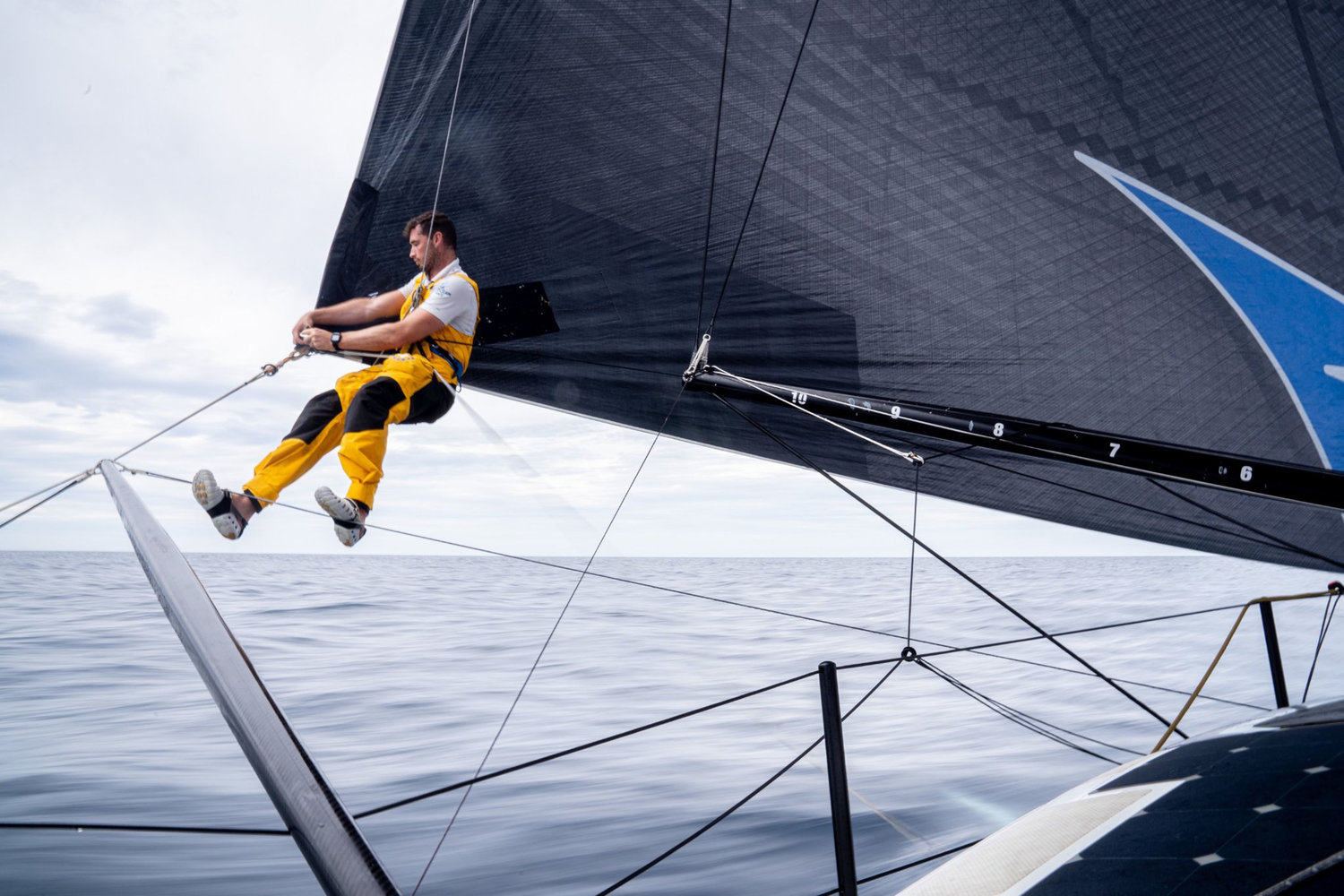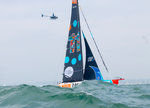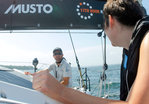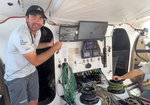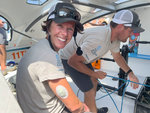- WEDNESDAY, APRIL 17, 2024
Third time’s the charm for Barrington's Enright
With new boat and crew, Enright embarks on a third Ocean Race campaign
Barrington’s Charlie Enright is currently preparing for his third Ocean Race — and this time the veteran skipper is determined to win.
Backed by sponsor 11th Hour Racing of …
This item is available in full to subscribers.
Please log in to continue |
Register to post eventsIf you'd like to post an event to our calendar, you can create a free account by clicking here. Note that free accounts do not have access to our subscriber-only content. |
Day pass subscribers
Are you a day pass subscriber who needs to log in? Click here to continue.
Third time’s the charm for Barrington's Enright
With new boat and crew, Enright embarks on a third Ocean Race campaign

Barrington’s Charlie Enright is currently preparing for his third Ocean Race — and this time the veteran skipper is determined to win.
Backed by sponsor 11th Hour Racing of Newport, Enright has been working on all aspects of the racing operation, from designing the new boat, to hand-picking a crew with championship experience, all while spreading the sponsor’s message of sustainability and regenerating ocean health.
“The program has grown immensely with Charlie at the helm,” said Rob MacMillan, co-founder and president of 11th Hour Racing. “In preparation for his third race around the world, he has mastered the complex art of building a race boat and leading design decisions for the first IMOCA 60 to sail with a crew of five.”
At age 37, Enright has two Ocean Race campaigns under his belt and and more than a decade’s worth of experience in offshore racing. He was born and raised in Bristol and began sailing with the Bristol Yacht Club at age 4. He sailed in college for Brown University and got his start in offshore racing in 2007 with the TP52 Morning Light in the 44th Transpac Yacht Race.
Enright skippered Alvimedica in the 2014-15 Volvo Ocean Race and then skippered Vestas and 11th Hour Racing in the 2017-18 Volvo Ocean Race. He has enjoyed spending much of this summer at home in Barrington with wife Meris, son Thomas, 6, and daughter Maggie, 5. He has been commuting back and forth to Newport to race Mãlama in the Newport to Bermuda Race in June, log some training time, and spread the clean ocean message at local schools and community based events.
The team shipped off to Concarneau, France on July 31, to complete a final training program in preparation for the 2023 Ocean Race.
“This time we have the sponsorship, the time for training and the resources to win,” Enright said in a phone interview before leaving for France.
First ever foiling IMOCA 60
The racing team is super excited about their new racing vessel, Mãlama, the first-ever foiling IMOCA 60 designed specifically for the Ocean Race by Enright and chief designer, Guillaume Verdier, a naval architect.
The team began designing the new vessel after Ocean Race partnered with IMOCA 60 in 2018. The partnership was made to ensure that the race will continue to be at the forefront of yacht design and technology.
“Every aspect of the vessel's environmental impact was tracked and considered without compromising performance,” said MacMillan of the boat’s sustainability.
Mãlama made of primarily carbon fiber, is an all-around boat with “no weaknesses,” according to Verdier, that was built for speed and overall handling in all types of wind as the boat can sail on and off the foils if needed.
“I don’t care to be the best downwind or the best upwind,” said Verdier. “I want this boat to be the full picture.”
Mãlama was designed and built in France through the pandemic and launched in August 2021. Enright and the crew have been training and getting the kinks out ever since. Belowdeck, one can’t even feel Mãlama lift out of the water and onto the two giant hydra foils. The boat just lifts and takes off.
Media members were chatting with the crew aboard the boat on Thursday, July 21, and were surprised when Enright pointed out that the boat was flying across Narragansett Bay at 25 knots.
“With the foils, the boats are so much faster. It’s insane,” said James O’Mahoney, the boat captain.
“The boat is completely built around the two foils,” said Lucien Moore, a boat builder born in France but schooled at IRYS in Newport, who was called in by Enright to help build the ship.
“It cascades into every other part of the boat,” he said. “Where you put the engine, the rudders everything is based around the foils. Because you’re going so fast and so violent, you have to add other things inside the boat. You have to change how you live on the boat. It puts strain on the mast, the keel.”
Moore said that the boat can sustain 30 knots on the foils in flat water consistently.
“When you are doing races like we do, you are really looking for consistent high speeds being able to do 300 to 400 miles in a straight line. It’s all set up for these long reaches and tacts to maximize your averages. And with the crew that we have, we can push the boat that much harder.”
There was no heeling or leaning when making tacks while on the foils. Mãlama glided evenly as the crew used the crankshaft belowdeck in the main cockpit to tack and change direction. The sleek looking Mãlama is equipped with the latest technology including touch screen computers and an autopilot system that assists the crew with maneuvers and helming as well as charting courses. The cockpit resembles the inside of a space capsule with the large crankshaft in the center. The crew, when sailing Mãlama, will mainly spend their time belowdeck, protected from the elements. Enright and the crew have been pushing Mãlama to the limits to see what the boat can do.
“We are trying to optimize for the race,” said Enright. “Most of these boats have a sweet spot and we are trying to get to a place where we are in the sweet spot throughout the course of the race.”
Though it is primarily steady on the foils, Mãlama can get uncomfortable on the crew from time to time as it can catch on large waves. “It’s definitely not a cruising boat,” said O’Mahony who is in charge of keeping the boat safe and making repairs during each stop during the race. He has pitched in to help the crew sail Mãlama and has gotten sea sick several times. The sweat gleamed on his face as he spoke to media members belowdeck.
“You’re getting hit by the waves and everything is going over you. It’s a whole new way of sailing. Our top speed is 37-38 knots. It can achieve speed that the old boats couldn’t. It’s fast and we feel the need for speed.”
Enright agreed. “In the open ocean there are times when the waves can make it uncomfortable.”
And that’s not the only thing, comfortability was not a priority when they built Mãlama. The ship’s cockpit is not insulated and crew members feel all of the weather belowdeck.
“It can get extremely hot and extremely cold,” said Enright.
Life aboard Mãlama
Mãlama has two rooms, a galley, sleep area under the bow and the cockpit where all sailing is done and all of the nautical equipment is housed. The schedule for the crew when sailing Mãlama is four hours on and four hours off according to O’Mahony.
“In that time off you’ve got to change, eat, do what ever else you need to do (bathroom) before heading off to sleep. You only get uninterrupted sleep if there are no maneuvers,” he said.
The shortest leg for the sailors during the race is six days. The longest leg is close to a month. Crewmen sleep on hammocks with a bean bag mattress. Some wear patches on their arms to monitor their sleep. They have a small stove where they can boil hot water. The crew can make coffee and eat snacks and freeze dried food. O’Mahony held up a clear bag that looked like hot cereal. “You add hot water. Ten minutes later it’s done. Some of it’s pretty good actually,” he said. There is no head aboard the ship. The toilet consists of a blue bucket. “You get very familiar with the people that you’re sailing,” he said. “It’s done in the corner of the cockpit.
“There’s two people sailing at all times. It’s one of those things that everyone gets familiar with everybody.”
Enright feels that the team has designed and built a boat in Mãlama that will sustain the punishment of the the weather and the waves all over the globe and especially around Carbo de Hornos (Cape Horn).
“Everyday that you’re in the south it’s a pretty scary,” Enright said. “Forty foot waves, gale force winds, you are in those conditions far away from any type of help. But you have to go there. Turning left at Cape Horn you have to confront whatever weather that’s there. But once you’re around the cape, there is a giant sigh of relief.”
Handpicked crew
“When it comes to the crew,” said Enright, “picking the right people is certainly a challenge and one of the most important jobs that I have.”
The 11th Hour Racing team has been training on Mãlama for over a year and will be together through the six-month 38,000 nautical-mile race. The boat will race with five team members aboard the vessel at a time. In spite of all of their different backgrounds, they have two things in common, the love to sail and the motivation to win.
Amory Ross, the team’s media crew member and sailor, has sailed in three Ocean Races, the last two with Enright. Ross chronicles the team’s voyages and gets the team’s news out through Instagram and other social media outlets.
Simon Fisher nicknamed “SciFi” is the team’s navigator. He sailed with Enright on Vestas.
Enright plucked two sailors, Justine Mettraux of Switzerland and Jack Bouttell of Australia, from 2017-18 Volvo Ocean Race winner Dongfeng. Mettraux sailed with the all female crewed SCA in 2014-15. She and her four siblings are all pro sailors.
Italian sailor Francesca Clapcich is the team’s trimmer. She sailed with Turn the Tide on Plastics in 2017-18. “It’s all about how you trim the sails,” she said of her job aboard Mãlama. “The different sizes and the different angles for how you want to sail. The crew is versatile and are able to do all of the jobs around the boat when needed.”
Tom Napper of Great Britain, is the team’s rigger. He held the same position for team Brunel in 2017-18. Napper learned to sail at a young age. “I was dropped off at the local sailing club in Salcombe, so my mum could go to work,” he said. “There I would be thrown into any boat to keep me entertained for the day.” Napper feels that Mãlama is not only fast, but can hold consistent good averages. “With the foil set up, it can be violent and aggressive, but it doesn’t tend to accelerate and then slam and stop, accelerate and then slam and stop. There’s times when you get thrown about obviously, but its averages stay right up there.”
Connor Banks is the team’s electrician. He is racing in his first Ocean Race. Banks has sailed in a 600-mile match race with the Maserati MOD 70 and James O’Mahony is the team’s boat captain.
Team to beat
Moore feels that Enright and his crew are the team to beat.
“Our chances our quite good. We are definitely the team that has the most preparation,” he said. “Our boat and crew are made and training for just the Ocean Race. We’ve had a full year now with the boat in the water and we’ve been pushing the boat as much as possible to see where the weak points are and resolve them, so that when we get to the start of the Ocean Race, we’ve had pushed through a lot of that development.”
“It’s a sailboat race,” said Moore. “Anything can happen, but we have a great group of people who have worked really hard for two years to get this boat ready to go and I’d say that we’ve got a great shot.”
“In some respects it’s not how fast you go, it’s getting the boat to the finish line,” said O’Mahony. “If you can reliably sail the boat and get the boat in a reliable state, you can win the race. And you might not be the fastest boat out there.”
Moore heralded 11th Hour Racing, “It’s great to be part of a team that has a big commitment to ocean health, education and making an impact rather than just getting a trophy.”
The race
“The next time we’ll be back here in Rhode Island,” said Enright, “It will be the Newport stopover in May 2023 and we will be over halfway through our round the world race and have rounded all three of the great Capes.
“It has been an honor to meet with local schools, the community, marine businesses and to share our 11th Hour Racing team who come from all over the world.”
“We are now counting down the days to the start of the Ocean Race and we can't wait to see everyone in Rhode Island at Fort Adams for The Ocean Race's only North American Stopover May 13-21, 2023,” said MacMillan.
Ocean Race schedule
Alicante, Spain - Leg 1 start: January 15, 2023
Cabo Verde - ETA: January 22; Leg 2 start: January 25
Cape Town, South Africa - ETA: February 9; Leg 3 start: February 26/27 (TBC)
Itajaí, Brazil - ETA: April 1; Leg 4 start: April 23
Newport, RI, USA - ETA: May 10; Leg 5 start: May 21
Aarhus, Denmark - ETA: May 30; Leg 6 start: June 8
Kiel, Germany (Fly-By) - June 9
The Hague, The Netherlands - ETA: June 11; Leg 7 start: June 15
Genova, Italy - The Grand Finale - ETA: June 25, 2023; Final In-Port Race: July 1, 2023
For more, visit theoceanrace.com
Other items that may interest you

